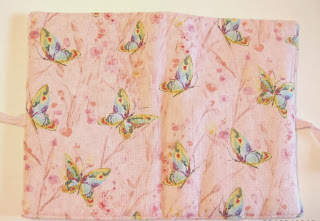Curie Craft Faire in San Diego, California.
Judy has been kind enough to allow us to post and share her designs on our blog.
They are awesomely cute and pretty! These crayon cases come with the crayons too. Great for a stocking stuffer at Christmas, birthday gift, or as a grab bag gift. Give on their own, add a coloring book, or include a pad of white paper.
If you aren't in San Diego, then keep an eye on Judy's Etsy shop for these or other crayon cases to become available after November 2nd.
























